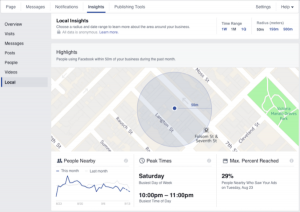 The final round of presidential debates wrapped up two weeks ago. The appearances were fiery and impassioned, to say the very least. Regardless of whom you support in the upcoming election, the process of choosing our country’s next chief executive is the cornerstone of the American democratic experiment. Yet it speaks to something much larger: leadership. Work infuses every aspect of our lives, whether it’s running a shop, overseeing a bustling enterprise or commanding a military. Nothing succeeds without effective leadership. The president has a big job to undertake, managing so many branches of a sprawling federal government. Contingent workforce leaders also find themselves at a tough intersection where disparate stakeholders converge — hiring managers, staffing providers, contingent talent, HR, client executives and more. In many ways, contingent workforce leaders are tomorrow’s business leaders. Let’s look at the three qualities exhibited by highly engaging leaders to ensure that we always rise to our potential as a guiding force in contingent workforce programs.
The final round of presidential debates wrapped up two weeks ago. The appearances were fiery and impassioned, to say the very least. Regardless of whom you support in the upcoming election, the process of choosing our country’s next chief executive is the cornerstone of the American democratic experiment. Yet it speaks to something much larger: leadership. Work infuses every aspect of our lives, whether it’s running a shop, overseeing a bustling enterprise or commanding a military. Nothing succeeds without effective leadership. The president has a big job to undertake, managing so many branches of a sprawling federal government. Contingent workforce leaders also find themselves at a tough intersection where disparate stakeholders converge — hiring managers, staffing providers, contingent talent, HR, client executives and more. In many ways, contingent workforce leaders are tomorrow’s business leaders. Let’s look at the three qualities exhibited by highly engaging leaders to ensure that we always rise to our potential as a guiding force in contingent workforce programs.
Real Leaders Lead, They Don’t Just Delegate
There’s more to incredible leadership than charisma, vision, issuing orders and taking charge. A compelling and results-driven leader builds confidence and strength through intention, as Andrew Thomas writes in Inc. Magazine. More often than not, this requires an individual who is willing to make the tough calls and do the hard things others won’t.
“The results are worth it,” Thomas observes. “As a strong leader, you’ll be able to attract the talent and funding you need to realize your vision. As a strong leader, you can inspire greater engagement and higher productivity from everyone around you. How do leaders achieve such results? By doing hard things on a daily basis.”
As any contingent workforce program leader knows, the ultimate measure of effective management springs from the performance of the team — and how that performance raises the quality and productivity of the client organization, especially in comparison to competitors. Unlike traditional corporate management, contingent workforce leaders aren’t just tasked with heading a team — they bear the responsibility of guiding multiple groups across the enterprise, and even beyond it.
With all the different classifications of workers in today’s increasingly blended labor force, contingent workforce leaders have evolved into shepherds of large, diverse flocks. They have the experience, resources, tools and best practices needed to identify new needs across the enterprise, access and entice the right talent, maintain compliance among all the different contingent categories and ensure operational and cost efficiencies. The quality of their leaders determines the success or failure of the outcomes.
Three Qualities of Highly Engaging Contingent Workforce Leaders
Control
In the bygone days of businesses, leaders were often taught to control the work and the workers. Corporate models were built as pyramids, with a top-down hierarchy. The notion of control was instilled at the highest levels to ensure the proper flow of duties down through the structure. In this dynamic and fluid economy, we’ve grown to understand that pyramidal models no longer achieve optimal results. In his 2002 book, marketing pioneer Joe Phelps predicted the transformational shift away from these practices and called them out for what they were: Pyramids Are Tombs.
Today the idea of control involves regulating our thoughts, attitudes and actions — not the daily duties of our talent, partners or vendors.
“Disciplined leaders know how to control and quiet their thoughts,” Andrew Thomas explains. “They harness their power of mind to manage what they can, and then let go of what they can’t control. They also know how to think analytically as well as creatively, striking the right balance between innovation and accountability.” Here are some ways contingent workforce leaders can master this type of control.
Embrace uncertainty and pitfalls. A contingent workforce program has more moving parts than a traditional business operation. Hiring managers, client executives, staffing partners and talent have different goals, needs and motivations. With all the uncertainty and demands coming in from different directions, some self-doubt and missteps will occur. Use these incidents as learning opportunities. Always move forward with the mission, embracing failures as lessons in experience. By correcting the issues, creating new practices and then acting on them, contingent workforce program leaders become positive examples that others want to follow.
Challenge your existing beliefs. Questioning the biases and long-held assumptions of the group helps you gain fresh insights to continuously improve performance. Accept healthy dissent as an offer of opinions with new value, not disobedience. Listen attentively and invite every stakeholder to participate in strategic conversations without the fear of rebuke. Foster diversity to gain even more wisdom and innovating thinking. The mission’s success depends on uncovering the truth — fixing flaws and capitalizing on gains. Conversely, working to rationalize deeply held convictions or a fractured culture will reinforce only the status quo, which might be broken.
Communicate and listen effectively. Communication is paramount to leadership, especially in contingent workforce programs. At any given time, there are hiring managers, staffing partners and talent who need your attention. Highly effective contingent workforce program leaders motivate, persuade and engage their audiences through empathy and honesty. They listen carefully and take their time to provide thoughtful responses, not orders. They also know when to hold back, choosing the appropriate time to reveal critical information. Success is achieved when leaders give their talent a voice, admit when they don’t have the answer, confess to being wrong, and ask for help. Vulnerability is not a sign of weakness; it can be a tremendous show of strength and unity.
As Liz Ryan writes in Forbes, “Weak managers have no intention of asking their subordinates for help. They don’t understand that being human is the only way to build trust on their teams.”
Compassion
“One of the toughest things for leaders to master is kindness,” explains Dr. Travis Bradberry for TalentSmart. “Kindness shares credit and offers enthusiastic praise for others’ work. It’s a balancing act, between being genuinely kind and not looking weak.”
At the core of compassionate management is a deep grasp of emotional intelligence, something we in the workforce solutions industry have been touting for a while. Truly influential contingent workforce program leaders understand this and promote it.
Achieving a state of productive kindness requires striking a balance between inherent compassion and strength. “Kindness is weak when you use it in a self-serving manner,” Dr. Bradberry cautions. “Self-serving kindness is thin — people can see right through it when a kind leader has an agenda.” Telling people the truth, rather than satisfying what we think they want to hear, is sincere kindness. Here are some ways contingent workforce program managers can foster firm yet compassionate leadership.
- Recognize the efforts, contributions and achievements of team members and partners.
- Coach people and constructively critique areas for improvement, while championing the development of perspective-taking and problem-solving behaviors.
- Engage in honest, self-aware and humble discussions about the needs and concerns of your workers and partners. Focus on finding opportunities in existing challenges.
- Lead by example and visibly work to build a community that serves the needs of the mission.
- Amazing leaders involve themselves in personal and professional development. They’re avid learners, always looking for ways to network, mentor, volunteer and expand their horizons.
- Emphasize the importance of honoring commitments, making the right decisions in tough circumstances, always being fair and respectful (even if others aren’t), and demonstrating a firm commitment to backing the plays of your people when they’re right.
Confidence
 “We gravitate to confident leaders because confidence is contagious, and it helps us to believe that there are great things in store,” says Dr. Bradberry. “The trick, as a leader, is to make certain your confidence doesn’t slip into arrogance and cockiness.”
“We gravitate to confident leaders because confidence is contagious, and it helps us to believe that there are great things in store,” says Dr. Bradberry. “The trick, as a leader, is to make certain your confidence doesn’t slip into arrogance and cockiness.”
Incredible contingent workforce program leaders develop confidence as a result of passion and belief in their abilities to make things happen. They don’t lose touch with reality and hoard credit for the accomplishments of their team. And when the going gets tough, true leaders jump into the trenches to get the job done with their people. This is how credibility is built, maintained and respected.
The trick is staying positive yet grounded in reality. When problems present themselves, pessimism and optimism alone will erode the chances of an optimal outcome. As an example, let’s say an MSP’s highest performing supplier leaves the program. The pessimist abandons hope. The blind optimist reassures everyone that the situation will somehow resolve itself, which ultimately becomes a disingenuous statement that destroys the confidence a team shares in its leadership.
The positive realist acknowledges the obstacle, solicits help from his or her team, develops a solution and pushes ahead with a “we can prevail” attitude. So in our example, here are some actions a powerful contingent workforce program leader could take.
- Explain the situation clearly to the client and its hiring managers. Outline the steps you’re planning to take, and propose a reasonable and achievable timeframe for the effort.
- Immediately gather your supplier management team and review performance analytics from other staffing partners in the program. Identify a group of partners with similar strengths and proven capabilities in related areas.
- Consider expanding that investigation to newer or smaller suppliers who have the potential and hunger to rise up and prove themselves. The opportunity could help you discover a new superstar provider.
- Hold a meeting with your top pick staffing partners to learn more, explain the issue and collaborate on a resolution. This could involve tiering staffing partners by job categories, industries and more. Invite newer partners to serve as second-tier backups.
- Lay out the implementation plan to the client, and then deploy.
Contingent Workforce Leaders Are Tomorrow’s Business Leaders
“Great leadership is dynamic; it melds a variety of unique skills into an integrated whole,” Dr. Bradberry concludes. And nothing in the workforce is as dynamic as contingent labor programs. They are rapidly redefining what “traditional” business environments will look like in the near future. So in many ways, contingent workforce program leaders are poised to stand as tomorrow’s business leaders. With the right practices and behaviors, they can create new successes for a new era of work.
Business & Finance Articles on Business 2 Community(39)
Report Post




